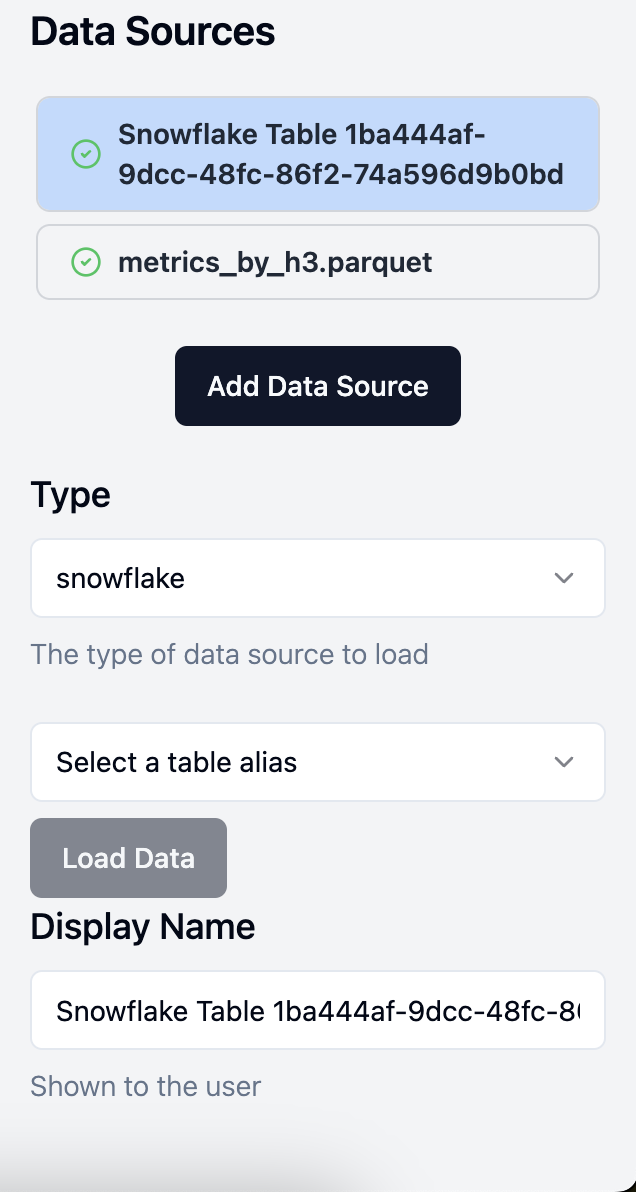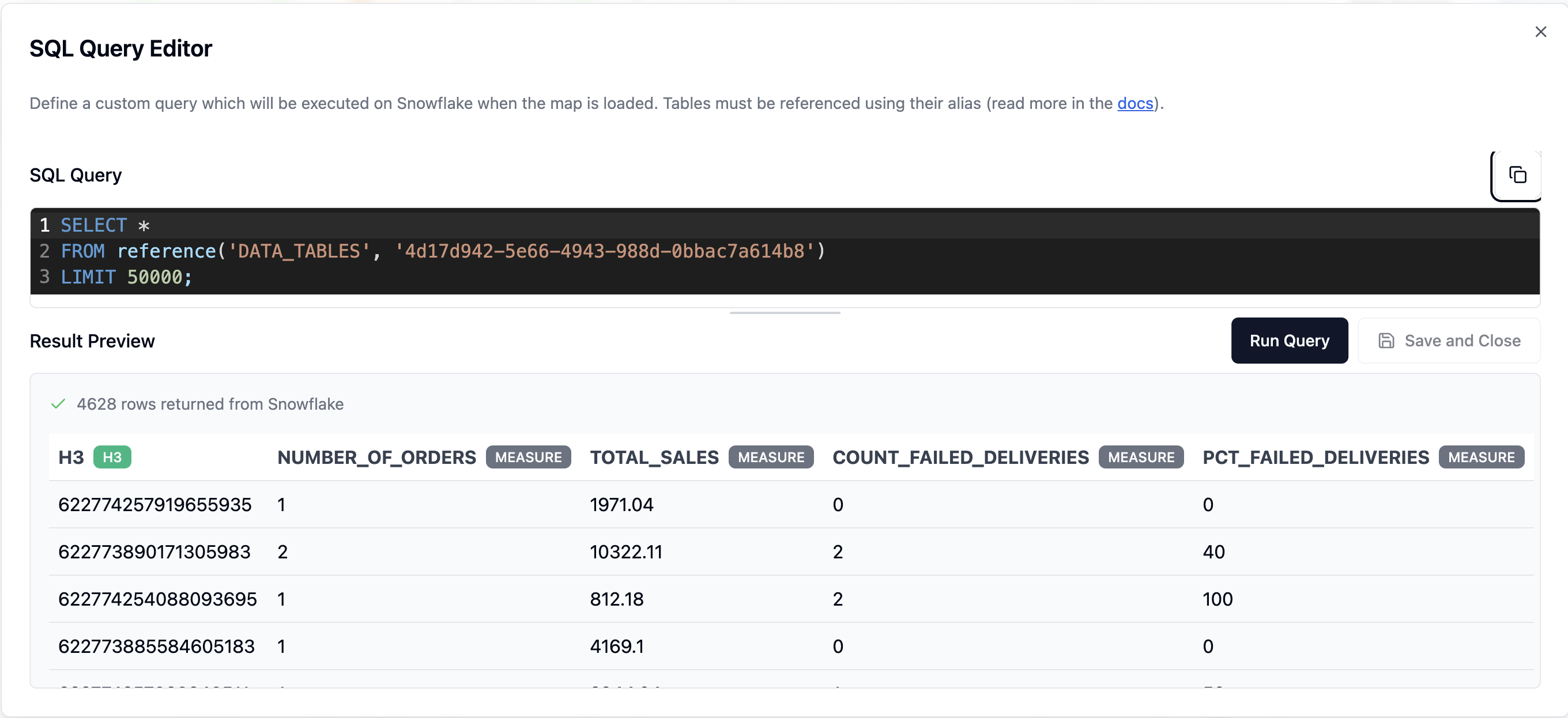Data Sources
The data sources pane lets you control where Honeycomb pulls data from to create a map.

Adding Data Sources
To add a data source, click on 'Add Data Source' and then select the type of data source. Honeycomb Data Explorer for Snowflake supports loading directly data from Snowflake tables as well as loading data from local files.
From Snowflake Tables
Honeycomb supports loading data directly from Snowflake tables in your account. However, by default Honeycomb does not have access to any tables within your Snowflake account. You must grant it access, similarly to how you can grant access to a user. Below are some sample queries that show how to add SELECT permissions to a table called FACT_ORDERS within the DELIVERY_DATA database.
GRANT USAGE ON DATABASE DELIVERY_DATA to application HONEYCOMB_DATA_EXPLORER;
GRANT SELECT ON TABLE DELIVERY_DATA.PUBLIC.FACT_ORDERS TO application HONEYCOMB_DATA_EXPLORER;GRANT USAGE ON DATABASE DELIVERY_DATA to application HONEYCOMB_DATA_EXPLORER;
GRANT SELECT ON TABLE DELIVERY_DATA.PUBLIC.FACT_ORDERS TO application HONEYCOMB_DATA_EXPLORER;Using a Custom SQL Query
If you want to only load certain rows and columns (for example if you are working with a very large fact table), you can set a custom SQL query that will be executed when the map loads. To do this, select 'Use Custom SQL' under the 'Rows to Fetch' section.

Click on the 'Open SQL Editor' button to open up a simple SQL editor. In the query editor you can write a SQL query, run it, and see the results. When you are satisfied with the results, click on 'Save and Close' to add the data to the map.

TIP
As explained above, Honeycomb only has access to tables that you explicity grant it access to. If a query is failing, make sure that Honeycomb has access to all the tables in the FROM clause.
From local files
Honeycomb can also load data from CSV and Parquet files that are stored on your computer. Because Honeycomb is a client-side application, these files won't be uploaded to a remote server.
Because data from local files stays on the device and is not uploaded to Snowflake or a remote server, it is not possible to save maps that contain data from local files.
WARNING
Local files should only be used as a data source for ad-hoc, one-time maps because the data will be lost when the browser window is closed.
Other configuration options
Display Name
The Display Name field allows you to enter a user-friendly name for this data source which will be used elsewhere in the Honeycomb user interface. This is especially useful if you build a map dashboard that pulls data from multiple Snowflake tables and need to differentiate between tables while you are configuring map layers and components.
Field names and types
The Fields list shows the fields (columns) that Honeycomb has identified within the imported data, along with their Field Type. Honeycomb inherits field types from Snowflake tables automatically and field types cannot be changed (if they are incorrect, they should be changed upstream/within Snowflake).
INFO
The field list can be useful if a field seems to be missing from measure options (for example, if you want to perform an aggregation on a 'sales' field, but it's not appearing as an eligible measure) it may be because it it being interpreted as a string rather than a number.